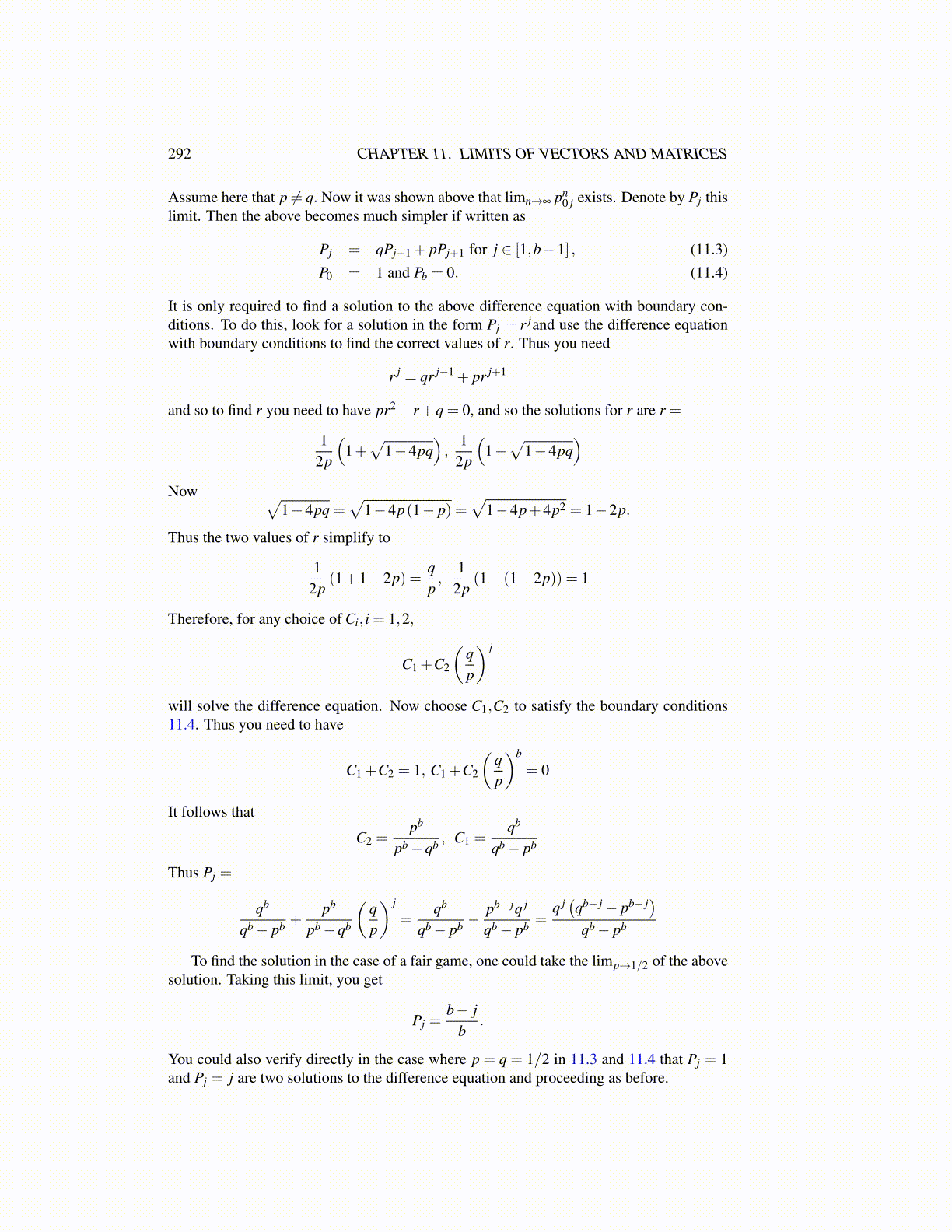
292 CHAPTER 11. LIMITS OF VECTORS AND MATRICES
Assume here that p ̸= q. Now it was shown above that limn→∞ pn0 j exists. Denote by Pj this
limit. Then the above becomes much simpler if written as
Pj = qPj−1 + pPj+1 for j ∈ [1,b−1] , (11.3)P0 = 1 and Pb = 0. (11.4)
It is only required to find a solution to the above difference equation with boundary con-ditions. To do this, look for a solution in the form Pj = r jand use the difference equationwith boundary conditions to find the correct values of r. Thus you need
r j = qr j−1 + pr j+1
and so to find r you need to have pr2− r+q = 0, and so the solutions for r are r =
12p
(1+√
1−4pq),
12p
(1−√
1−4pq)
Now √1−4pq =
√1−4p(1− p) =
√1−4p+4p2 = 1−2p.
Thus the two values of r simplify to
12p
(1+1−2p) =qp,
12p
(1− (1−2p)) = 1
Therefore, for any choice of Ci, i = 1,2,
C1 +C2
(qp
) j
will solve the difference equation. Now choose C1,C2 to satisfy the boundary conditions11.4. Thus you need to have
C1 +C2 = 1, C1 +C2
(qp
)b
= 0
It follows that
C2 =pb
pb−qb , C1 =qb
qb− pb
Thus Pj =
qb
qb− pb +pb
pb−qb
(qp
) j
=qb
qb− pb −pb− jq j
qb− pb =q j(qb− j− pb− j
)qb− pb
To find the solution in the case of a fair game, one could take the limp→1/2 of the abovesolution. Taking this limit, you get
Pj =b− j
b.
You could also verify directly in the case where p = q = 1/2 in 11.3 and 11.4 that Pj = 1and Pj = j are two solutions to the difference equation and proceeding as before.